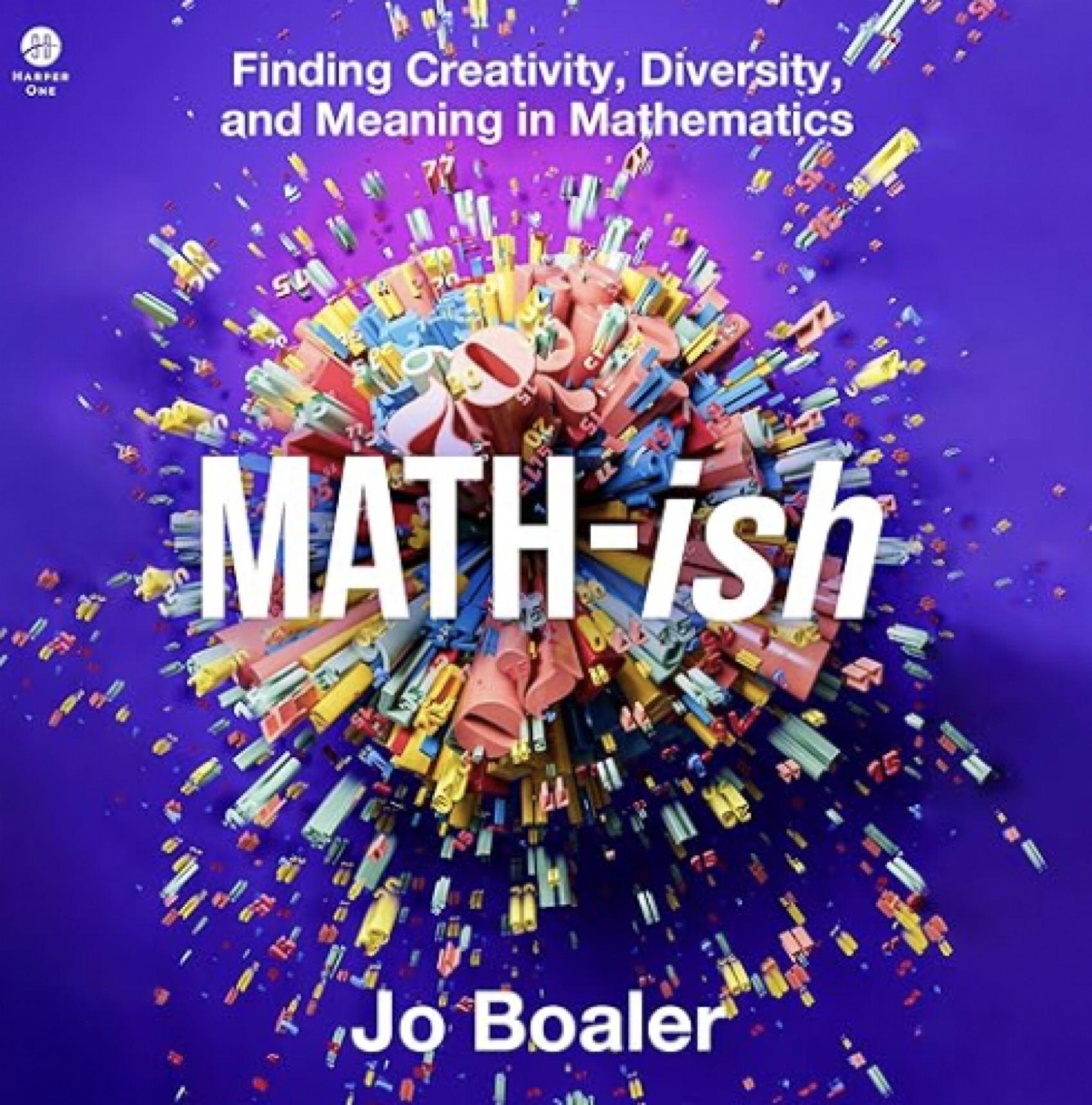
MATH-ish: Finding Creativity, Diversity, and Meaning in Mathematics by Jo Boaler explains how to change math teaching in order to allow more students to succeed. Students should study and create visuals, engage in class discussions, and be given more diverse lessons. Be sure to check out her website YouCubed.org for lots of great math resources.
1. A New Mathematical Relationship
- There are three villains here. One is our thinking that math is a series of procedures that need to be performed at speed. Second is that math is the most over-tested subject. Third is believing that there is a math brain that some of us either have at birth or not. This has all made math seem narrow for almost everyone.
- Of the 40% of students who go to a two-year college, 80% of are required to take remedial math and 65% of those never pass it. Thus the door to STEM courses in slammed. Mathematical diversity is usually missing. It can be a key for collaboration, problem-solving, compassion, and achievement. Diversity in math values different ways that people see and think about math more slowly and creatively. This book can even help the reader, even if they are already good at math.
2. Learning to Learn
- The big idea here is to be a metacognitive learner. This can help learners of any age and for any situation in and outside of math class. Metacognitive learners are self-aware, reflect on different strategies, and track their own progress. They take a step back to get the big picture, draw visuals when possible, look for new approaches, repeatedly ask “why,” try to simplify, conjecture, try to satisfy skeptics, and try smaller cases.
- Jo promotes reflection as part of metacognitive thinking to promote a growth mindset. She also recommends using rubrics. She uses group work with specific roles for each member. Students keep a journal and teachers add comments with post-it notes.
3. Valuing Struggle
- People with growth mindsets view mistakes as opportunities. They pay more attention to feedback and experience less emotional stress due to errors. Be sure to give students their tests back so they can see and make notes about their mistakes. Try the process of having students and groups share their mistakes with the entire class. Students should know that evidence of struggle shows that their brains are working hard, which is a good thing. Share favorite mistakes and consider the logic used.
- Tell students “I am giving you difficult work because I want you to struggle.” If you can promote a growth mindset you will raise achievement, improve health, and dial back aggression. Working at their edge of understanding causes struggle and promotes learning. We don’t achieve much by playing it safe. Creativity and mistakes go together. Parents should know that struggle starts at home. Praise hard work not smarts, and don’t punish mistakes.
DrDougGreen.com If you like the summary, buy the book





